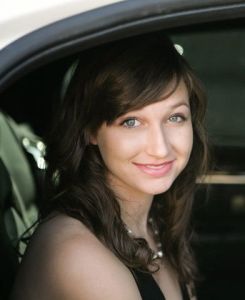
Brooke Baitinger is a junior studying journalism at the University of Florida. Writing is her passion, but she has always appreciated science, so she was excited to combine the two interests for Layman’s Terms Media. In her spare time, she likes to ride horses and explore what the world around her has to offer.
Editor’s note: This is part of a series of contributing bloggers beginning their careers as journalists/public relations professionals at the University of Florida. Please see my earlier post about getting journalists excited about science writing early on.
By: Brooke Baitinger
If you have ever taken a science class, you were probably frustrated with the concept of mass when your professor told you that particles have it, but could not tell you why.
The same question puzzled scientists everywhere until physicists Peter Higgs and Francois Englert proved the existence of the Higgs boson particle, a particle that gives mass to other particles when they pass through its field.
Without the mysterious Higgs field spreading across the universe, particles would simply wander about in space, instead of joining together to make atoms, which are the building blocks of life. Because of this, the news media gave it the controversial name of “The God particle.” Although Higgs was not the first scientist to theorize about the field, he was the first to suggest the mechanism to detect it: the Higgs boson particle.
Higgs and Englert first theorized the existence of the Higgs boson nearly 50 years ago, and began conducting experiments to prove it shortly after. In October, they received official recognition for their work in the form of this year’s 2013 Nobel science prize win.
But Higgs and Englert were not the only scientists who celebrated their win.
A team of UF researchers called the High-Energy Experimental group played a significant role in the Compact Muon Solenoid experiment, or CMS, an international experiment conducted to discover the elusive Higgs boson particle.
It was one of the largest American teams on the experiment, consisting of about 40 people, including professors, post docs, research scientists and graduate students.
The CMS experiment was conducted at the Large Hadron Collider facility in Geneva, Switzerland, and involved accelerating particles to near light speeds, essentially recreating the Big Bang, in which the Universe began expanding rapidly and energy was converted into various subatomic particles such as protons, neutrons and electrons that would eventually form our galaxy, our solar system and our planet.
By recreating the Big Bang, scientists were able to produce different particles, one of which was the Higgs boson.
“It is very rare to produce a Higgs Boson. Much less than one in one trillion collisions gives you a Higgs particle,” said Darin Acosta, the deputy physics coordinator of the collaboration and a UF physics professor.
Guenakh Mitselmakher, another UF physics professor, led the international group. He said that they are pleased about the discovery because it justifies what the team has been working on for the last 20 years.
“This is one of the biggest scientific events of the last 50 years,” he said. “The theory not only tells us which particles exist but also how they interact. The universe would not exist as it is now without the Higgs boson,” he said.
Acosta said that the discovery provides insight into something the scientific community was previously unable to explain.
“We had theories for how the forces in particles work but we couldn’t calculate the mass. The Higgs field explains why particles have mass, so it means we understand something new about the universe,” he said.
UF contributed to the construction of the experiment by building detectors, electronics and overseeing machine operation.
“It’s not something you just order at Walmart and turn on,” Acosta said. “It’s called commissioning. You have to make sure things are working properly.”
Graduate students were heavily involved with commissioning the machine. They produced the electronics for the muon detector and also dealt with data analysis once the detector had been operating long enough to produce results.
Matthew Snowball will be the first of three graduate students to defend his dissertation on the Higgs boson in the spring of next year.
“I was lucky enough to be the first person to see the Higgs mass peak, as well as make several of the plots used in the Higgs discovery paper from CMS, published in July 2012,” he said. “It was extremely gratifying as it was the culmination of several years of little sleep and lots of hard work.”
CMS is the most expensive experiment ever built. The Higgs particle quickly became one of the most significant theories in the physics community when it first emerged on the scientific scene nearly 50 years ago, Mitselmakher said.
“I’m not sure there was a typical day during research,” Acosta said. “It was lots of graduate students submitting computer jobs to thousands of computers, making plots and presenting them at a working meeting. Eventually certain meetings became very exciting when you would start to see a signal coming out of your plots where there wasn’t one before.”
As for the team’s next step, it hopes to find a needle in a haystack.
“We didn’t stop,” Mitselmakher said. “We are upgrading the detector now. This accelerator allows us to produce every particle, but the problem is to find it [a new particle] among zillions of other particles.”
The machine was turned off for refurbishing in February 2013, and is scheduled to turn back on in 2015 so scientists can further their research.
“We found one particle and that is what was predicted by the theory,” Acosta said. “We hope there is more to find because we have many more questions. We need to see if this is the only Higgs boson, or are there others at different masses?”
